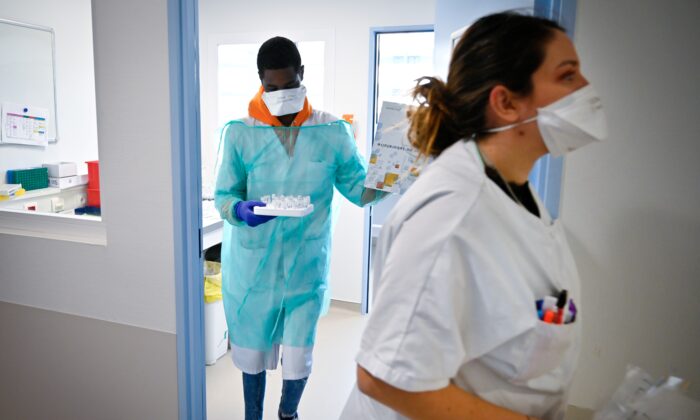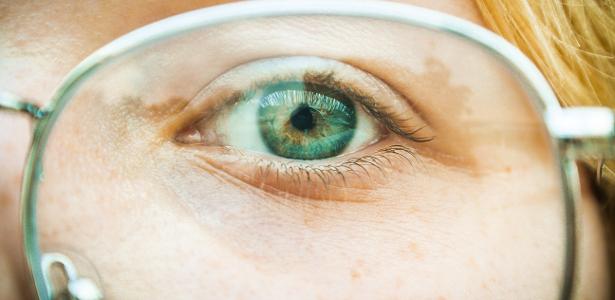
While health officials have said COVID-19 symptoms have been relatively constant over the years, recent research has revealed the most common symptoms of the viral infection, with the US Centers for Disease Control and Prevention (CDC) reporting that the most recent variant, JN.1, has shown an increase in the last days.
In an update earlier this month, the CDC said it was unclear whether symptoms associated with the JN.1 variant differed significantly from previous symptoms.
“In general, COVID-19 symptoms tend to be similar across variants,” the agency said. “The types and severity of symptoms often depend more on a person’s immunity and general health than on the infecting variant.”
New symptoms?
You Recent data from the survey Data collected by health officials in the United Kingdom, where multiple strains of COVID-19 are circulating, suggests that sleep problems and insomnia appear to be becoming more common symptoms among cases. In comparison, a survey released more than a year ago in Scotland did not list sleep problems or insomnia as symptoms.
Data shows that approximately 10.8% of UK residents surveyed reported having difficulty sleeping. The same data set shows that 10.5% of participants cited anxiety or worry as a symptom of coronavirus.
It is important to note that the previous hallmark of COVID-19 infection was loss of the sense of taste or smell. However, this symptom was reported by only about 2% of survey participants. The Scottish survey last year showed that about 11% of participants reported losing their sense of taste or smell.
Meanwhile, only 2.4% reported having a fever associated with COVID-19, according to the survey.
The data shows that the most common symptom of Covid-19 was a runny nose, for 31.1% of participants, while cough came second on the list, at 22.9%. About 20% of participants reported a headache, approximately 20% reported weakness or fatigue, 15.8% reported muscle aches, and 13.2% reported a sore throat.
The UK survey did not mention the JN.1 variant. How different these symptoms are also depends on whether these people test positive for COVID-19 specifically or other infections, such as influenza and respiratory syncytial virus.
“Cough, sore throat, sneezing, fatigue, and headache were among the most common symptoms for each of the three infections, suggesting that distinguishing between SARS-CoV-2, influenza, and RSV based on symptoms alone can prove challenging.” British officials wrote in a previous article. These symptoms are consistent with other research conducted on previous COVID-19 variants throughout the pandemic.
A study by the Centers for Disease Control and Prevention, released in May as an introductory article, found that symptoms common among those who were infected with the previous BA.5 strain looked markedly different. About 77% reported cough, 48% reported fever, 22% reported shortness of breath, and 20% reported a change in taste or smell.
Growth of JN.1
On December 22, the Centers for Disease Control and Prevention said in an update that JN.1 continues to “cause an increasing share of infections and is now the most widely circulating type in the United States,” adding that it now accounts for about 39% to 50% of infections. % of total infections. All types of infections. He pointed out that two weeks ago the percentage ranged from approximately 15% to 29%.
“The continued growth of JN.1 suggests that the variant is either more transmissible or better at evading our immune systems than other circulating variants. It is too early to know whether JN.1 will cause an increase in infections,” the CDC said. Or hospitalizations and to what extent,” he said, adding: “We are also seeing an increasing proportion of infections caused by JN.1 in travellers, wastewater, and more areas around the world.”
Several days before the update, the United Nations World Health Organization listed the JN.1 COVID-19 subvariant as a “variant of concern” but noted that there is little evidence to suggest it poses a more serious health risk than others. Recent variables.
The variant “could cause a surge in SARS-CoV-2 infections amid a rise in other viral and bacterial infections, especially in countries entering the winter season,” referring to the virus that causes COVID-19, according to the World Health Organization.
“While we note the emergence of the JN.1 variant, it is important to note that although it may be spreading more widely, there is currently no significant evidence to suggest that it is more dangerous or poses a significant public health risk.” Dr. John Brownstein, chief innovation officer at Boston Children's Hospital, told ABC News last week.
This comes as several hospitals in Massachusetts, New York, California, Illinois, Delaware, Washington and elsewhere have chosen to re-enforce mask wearing. While some hospitals are requiring the use of masks for staff only, some facilities will require face coverings for patients and visitors as well.

“Friendly zombie guru. Avid pop culture scholar. Freelance travel geek. Wannabe troublemaker. Coffee specialist.”





